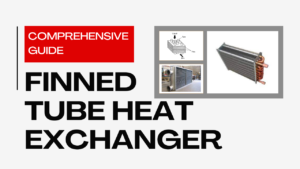Non-destructive testing (NDT) plays a crucial role in ensuring the integrity and safety of various structures and components. One of the most widely used NDT methods is Magnetic Particle Testing (MT), which allows for the detection of surface and near-surface defects in ferromagnetic materials. In this article, we will delve into the details of Magnetic Particle Testing, its applications, advantages, and limitations.
Table of Contents
Don’t miss the Complete Course on Piping Engineering: Check Now
By EPCland.com
Introduction to Magnetic Particle Testing (MT)
Magnetic Particle Testing, commonly referred to as MT or MPI (Magnetic Particle Inspection), is a non-destructive testing method used to identify defects such as cracks, discontinuities, and other flaws on or just below the surface of ferromagnetic materials. These materials include iron, steel, and their alloys. MT relies on the principle that when a magnetic field is applied to a ferromagnetic material, magnetic lines of force will be disrupted or distorted by any defects present.
How Magnetic Particle Testing Works
Magnetic Particle Inspection Process:

- Magnetization: The first step involves magnetizing the test object using either a permanent magnet or an electromagnet. This magnetization causes the magnetic field to flow through the material.
- Application of Particles: Ferromagnetic particles (usually iron or iron oxide) are applied to the surface of the test object. These particles are either dry or suspended in a liquid suspension.
- Defect Interaction: The particles adhere to the surface due to the magnetic field’s influence. In areas with defects, the magnetic field is distorted, causing the particles to accumulate at these locations.
- Inspection: A trained inspector examines the test object’s surface for particle accumulation, indicating the presence of defects. The inspector can determine the type, size, and location of defects based on the particle patterns.
- Interpretation: The inspection results are interpreted to assess the severity of defects and whether they meet acceptance criteria.
Advantages of Magnetic Particle Testing
Magnetic Particle Testing offers several advantages, making it a preferred choice in many industries:
1. Sensitivity to Surface and Near-Surface Defects
MT is highly sensitive to detecting surface and near-surface defects, making it suitable for materials where defects could propagate quickly, leading to catastrophic failures.
2. Rapid and Cost-Effective
The inspection process is relatively fast, allowing for quick turnaround times. Additionally, the equipment required is relatively simple, contributing to cost-effectiveness.
3. Wide Range of Applications
MT is used across various industries, including aerospace, automotive, construction, and manufacturing, to inspect welds, castings, forgings, and other components.
4. Portable Equipment
The equipment used for MT is often portable, enabling inspections to be carried out on-site, reducing the need for transporting heavy materials.
5. Ability to Detect Both Surface and Subsurface Defects
MT can identify defects that are not visible to the naked eye, providing a comprehensive assessment of the material’s condition.
Don’t miss the Complete Course on Piping Engineering: Check Now
By EPCLand.com
Limitations of Magnetic Particle Testing
While MT is a powerful NDT method, it does have its limitations:
1. Limited to Ferromagnetic Materials
MT can only be used on materials that respond to magnetic fields, excluding non-ferromagnetic materials like aluminum or copper.
2. Surface Accessibility
The effectiveness of MT is dependent on having direct access to the material’s surface, which can be challenging for complex shapes or areas with restricted access.
3. Limited Depth of Detection
MT is most effective at detecting defects near the surface. Deeper defects may not be detected accurately.
4. Pre-Cleaning Required
Before conducting MT, the surface must be thoroughly cleaned to ensure the particles adhere only to actual defects, not contaminants.
5. Skill-Dependent Interpretation
Interpreting the particle patterns requires trained inspectors with a keen eye for detail and experience.
Applications of Magnetic Particle Testing
Magnetic Particle Testing finds extensive use in various industries and applications:
Welding Inspections
In industries like construction and manufacturing, MT is used to inspect welded joints for cracks, porosity, and other defects.
Aerospace Industry
MT is employed to inspect critical components of aircraft, including engine parts and landing gear, ensuring their structural integrity.
Automotive Industry
In the automotive sector, MT helps identify defects in engine components, chassis, and suspension parts.
Power Generation
MT is used to inspect turbine blades, generators, and other components in power plants to prevent failures that could lead to downtime.
Railway Maintenance
Railway companies use MT to inspect rails, wheels, and axles, ensuring safe and reliable operations.
Conclusion
Magnetic Particle Testing (MT) is a vital non-destructive testing method used to identify surface and near-surface defects in ferromagnetic materials. Its sensitivity, cost-effectiveness, and wide range of applications make it an indispensable tool in various industries. While it has limitations, MT remains a cornerstone in ensuring the structural integrity and safety of critical components.
FAQs
Q1. What is Magnetic Particle Testing?
Magnetic Particle Testing (MT) is a non-destructive testing method used to detect surface and near-surface defects in ferromagnetic materials.
Q2. What materials can be inspected using MT?
MT is suitable for ferromagnetic materials such as iron, steel, and their alloys.
Q3. How is the inspection process carried out?
The process involves magnetizing the material, applying ferromagnetic particles, inspecting for particle accumulation, and interpreting the results.
Q4. What are the advantages of MT?
MT offers sensitivity to surface defects, cost-effectiveness, a wide range of applications, portable equipment, and the ability to detect both surface and subsurface defects.
Q5. Where is MT commonly used?
MT is used in welding inspections, aerospace, automotive, power generation, and railway maintenance to inspect critical components and ensure structural integrity.
Recommended courses (Published on EPCLand)
- Basics of Piping Engineering
- Piping Layout Engineering
- Piping Material Engineering
- Piping Stress Analysis
- Complete Course on Piping Engineering
- Material Requisitions
- Piping Material Specifications
- Valve Material Specifications
Don’t miss the published articles on following:
Related Video
Attempt Quiz
Question 1:
What is Magnetic Particle Testing (MT)?
Explanation: Magnetic Particle Testing (MT) is a non-destructive testing method used to detect surface and near-surface defects in ferromagnetic materials by applying a magnetic field and using magnetic particles as indicators.
Question 2:
What type of defects can Magnetic Particle Testing (MT) detect?
Explanation: Magnetic Particle Testing (MT) is effective in detecting surface and near-surface defects such as cracks, seams, laps, and other discontinuities that may interrupt the magnetic field in ferromagnetic materials.
Question 3:
What is the basic principle of Magnetic Particle Testing (MT)?
Explanation: The basic principle of Magnetic Particle Testing (MT) involves inducing a magnetic field in a ferromagnetic material and applying magnetic particles, which align themselves at defect locations, making the defects visible and easily detectable.
Question 4:
What are the two main types of magnetic particles used in Magnetic Particle Testing (MT)?
Explanation: The two main types of magnetic particles used in Magnetic Particle Testing (MT) are dry particles and wet particles, which can be suspended in a liquid carrier for application on the test surface.
Question 5:
What is the purpose of using a black light in fluorescent magnetic particle testing?
Explanation: In fluorescent magnetic particle testing, a black light (ultraviolet light) is used to make defects more visible by causing fluorescence in the magnetic particles, enhancing the detection of surface and near-surface defects.



